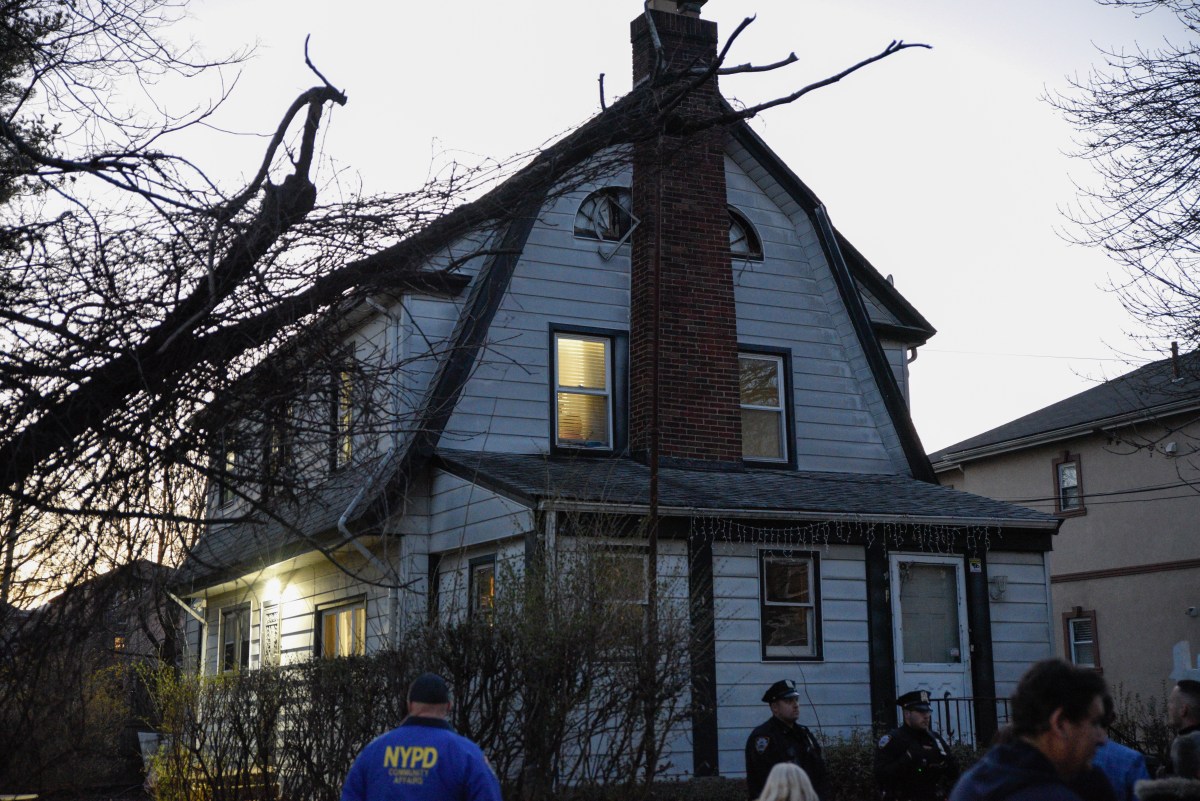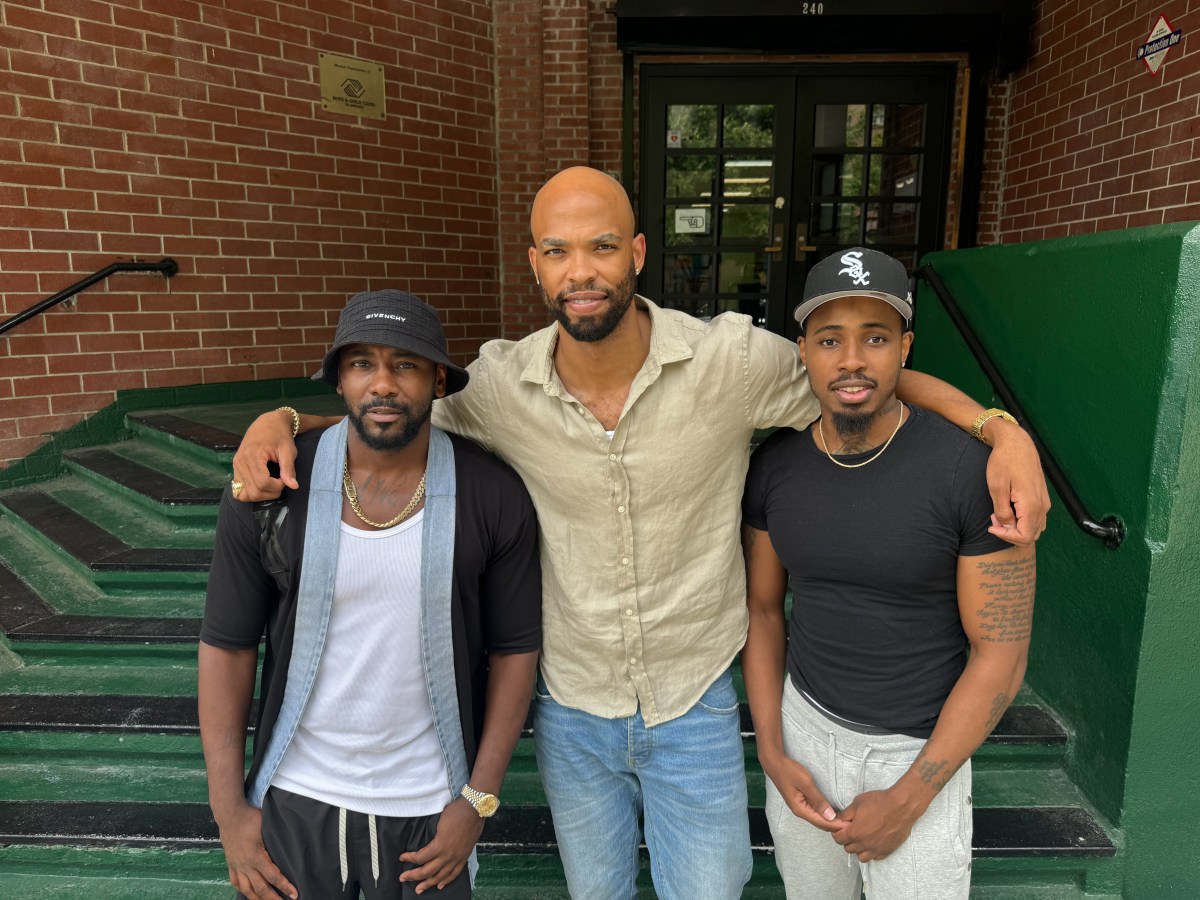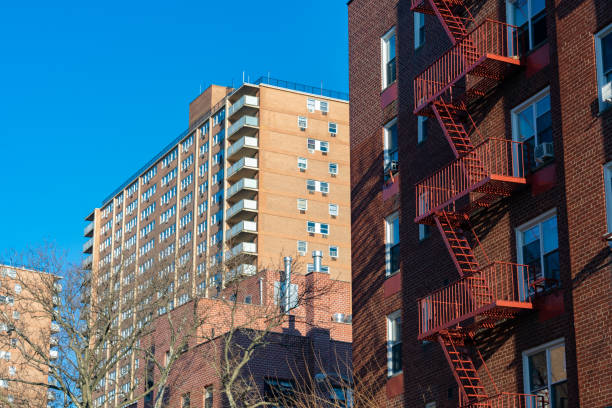
Rising 40 stories above the East River, Level caps off a row of towers, mostly made of glass, that span the Williamsburg waterfront.
When the developer wraps up the interior finishes on the luxury apartment complex in the next few months, the final tower authorized in Williamsburg under a 2005 rezoning will be complete.
That reclassification allowed taller residences on the traditionally industrial coast of Williamsburg and Greenpoint and limited how dense new buildings could be farther inland. A flurry of housing construction, an influx of residents and a bevy of complaints about displacement followed.
Now, the tide of development is moving toward Greenpoint, and the neighborhood is taking stock of what transpired to its south. Residents have seen crews build The Greenpoint, a 40-story condo development at the foot of a ferry dock, as well as the first of several residential towers slated to rise as part of the 22-acre Greenpoint Landing project.
The area’s city councilman, Stephen Levin, estimates Greenpoint’s coast will eventually house at least 20 high-rises.
“It’s almost hard for people to even envision, but Greenpoint will look exactly like North 6th Street,” Levin said, referencing a Williamsburg block where a great deal of waterfront development has occurred. “It will entirely change the neighborhood along that stretch of kind of western Greenpoint, which is … a very quiet, low-rise, community. It will look more like Long Island City or other cities that have kind of a Gold Coast development style.”
Upon taking office in 2010, Levin inherited a zoning plan that former Mayor Michael Bloomberg estimated would lead to the construction of 10,800 new apartments, 3,500 of which would be below market-rate.
Neighborhood advocates thought they had negotiated a sufficient amount of affordable housing, according to Martin Needelman, executive director of Brooklyn Legal Services Corporation A, which represents low- and middle-income individuals.
But years after the new rules went into effect, Needleman said he realized they had underestimated how powerfully the new development would buoy the greater housing market and inspire landlords to push out rent-regulated and other lower-income tenants and make way for those who could pay more.
“You’re causing massive displacement that wipes out any benefit you get from affordable apartments,” Needelman said.
The affordable housing did not materialize as quickly as expected either, several neighborhood advocates said. They anticipated that inland developments, which could receive benefits if they opted into a voluntary affordable housing program, would prompt participants to build more new affordable homes, rather than opting to support or “preserve” existing affordable homes.
When asked, the city did not specify how many below market-rate units have been built versus those preserved inland.
Additionally, when asked about a handful of locations the city committed to turn into a total of 1,345 affordable housing units in a 2005 agreement, the city claimed all but one public site had been completed.
But at least two of the locations the city checked off its list have not yet been transformed into housing: The city is currently seeking feedback on a plan to build homes atop a parking lot at Cooper Park Houses and one lot — 59 Java St. — has been turned over to the Parks Department.
“The development of city-owned properties has really only moved forward in the current administration,” said Frank Lang, director of housing at the nonprofit St. Nicks Alliance.
Amid the housing market changes, the southside Williamsburg Latino population shrunk by 34 percent from 2000 to 2014, according to a report by its city councilman, Antonio Reynoso.
The area’s manufacturing businesses declined, and hotels, nightclubs and other attractions have monopolized the area despite the city’s efforts to protect the existing firms, according to Evergreen, a local business exchange.
The area has more restaurants, bars and tourists, residents said. Although it took some prodding, the city is working to open up promised parks, and new development is expected to usher in a roughly 2-mile, waterfront esplanade.
Development continues inland, where taller residences would require approval. And just to the south of the 2005 rezoning area, Two Trees Management is transforming the old Domino Sugar Factory into 2,200 apartments as well as commercial and tech space under a separate land use decision.
These changes are applauded by city planning officials and Jeffrey Levine, whose Douglaston Development firm has created 565 condos, 347 affordable housing units and 1,063 market rate apartments, including the Level, as part of one large development plan. They note that the waterfront was once riddled with eyesores and sought-after by waste management firms.
“The high-rise development, in concert with affordable housing, has created housing opportunities for people from all levels of income,” Levine said. “While it may not please everyone, it pleases many people to have this housing opportunity in such a wonderful neighborhood to live.”
City planning officials claim the rezoning has led to more permanently affordable homes than existed in the area in 2005. Nonetheless, Mayor Bill de Blasio’s administration opted to move away from the voluntary affordable housing program and now requires that a portion of residences be below market rate when areas are upzoned.
But back in Greenpoint, the old rules apply and residents say they see familiar patterns: Residents being priced out, construction cranes and a shift in local stores.
“I do worry about it,” said Steve Chesler, co-chair of the Friends of Bushwick Inlet Park group, while noting that Greenpoint has less industrial land that could transition to housing than Williamsburg, fewer commercial strips and a historic district. “I don’t know if it could happen exactly like it did there.”




































